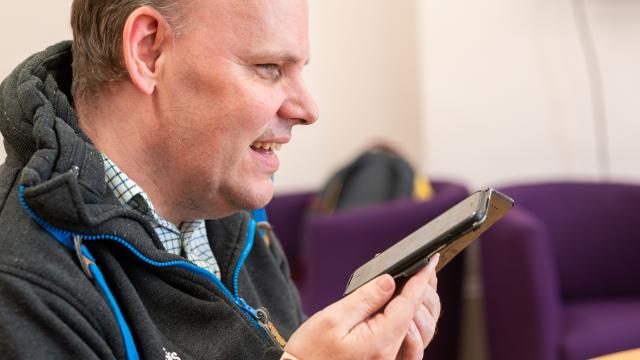
Accessibility is more important now than ever - here's what you can do to help
Right now, digital accessibility is more important than ever. As the world moves more and more online, there is a high risk of people with disabilities being left behind. Only recently, train operators tried to close in-person ticket offices, so people with disabilities would have been forced to buy tickets through often-inaccessible ticket machines or apps. These actions send a message that some people’s voices and needs are less important. For people with disabilities, this can lead to further exclusion from work, education, and daily life.
However, there are simple ways you can help people with disabilities access online content and be part of the conversation. By making content accessible, we can ensure everyone has the same opportunity to participate and be heard. Here are some easy tips to follow to make sure you are as inclusive as possible.
What is digital accessibility?
Digital accessibility means making sure that websites, emails, apps, social media, documents and all online content can be used by everyone – no matter their ability. From making text easier to read, to adding captions to videos, there are simple steps you can take every day to be more accessible.
Why should you care?
If your digital content isn’t accessible, some people may not be able to engage with it. Inaccessible content can create serious barriers for people with disabilities, which means they could miss out on important information. Digital accessibility ensures that as many people as possible can read, understand, and respond to what you’re sharing. If your content is inaccessible, people with disabilities may be unable to buy your products, respond to your opinions, comment on your photos, cheer on your successes, or offer help when you ask for it. By being inaccessible, you're limiting the reach of your message.
How you can be more accessible
Use clear, simple language
- The average reading age in the UK is 9. Avoid jargon or overly complicated words. Not everyone has the same level of understanding, so keeping your content simple helps everyone.
- Use short, clear sentences. They are easier for everyone to understand. Split up long pieces of content with headings or bullet point lists.
Make your text easy to read
- Choose fonts that are easy to read, like Arial or Times New Roman, in a large enough font size.
- Make sure your font colour has enough contrast with the background. You can use a colour contrast checker to test it.
- Avoid using italics or bolding paragraphs of text, as this can be difficult for some people to read.
Use headings
- Headings help split up long pieces of content but are also used by screen reader users to browse websites or documents. In programs like Microsoft Word, make sure to use proper heading styles instead of just bolding the text.
Add alternative text to images
- If you share images in emails, websites or social media posts, make sure to add alternative (alt) text. This is a short description of the image that is read aloud to blind or visually impaired people using a screen reader.
Provide captions for videos
- Captions provide a text version of speech for people who are deaf or hard of hearing. Make sure you add clear captions to all videos, including stories on social media.
Make links descriptive
- When you share a link, make sure the text explains what the link is about. For example, instead of saying "click here," say "read more about SeeAbility." This is helpful for people who use screen readers.
Get feedback
- Test your content with people who have different abilities to ensure that everyone can access and understand it. This will identify any barriers and help you make improvements.
Digital accessibility helps make sure that everyone, no matter their ability, can access the information you share. Everyone deserves a fair opportunity to connect, share ideas, and be heard. Let's all make small changes to ensure no one is left out.
Interested in learning more? Take a look at our accessibility and inclusion support.




